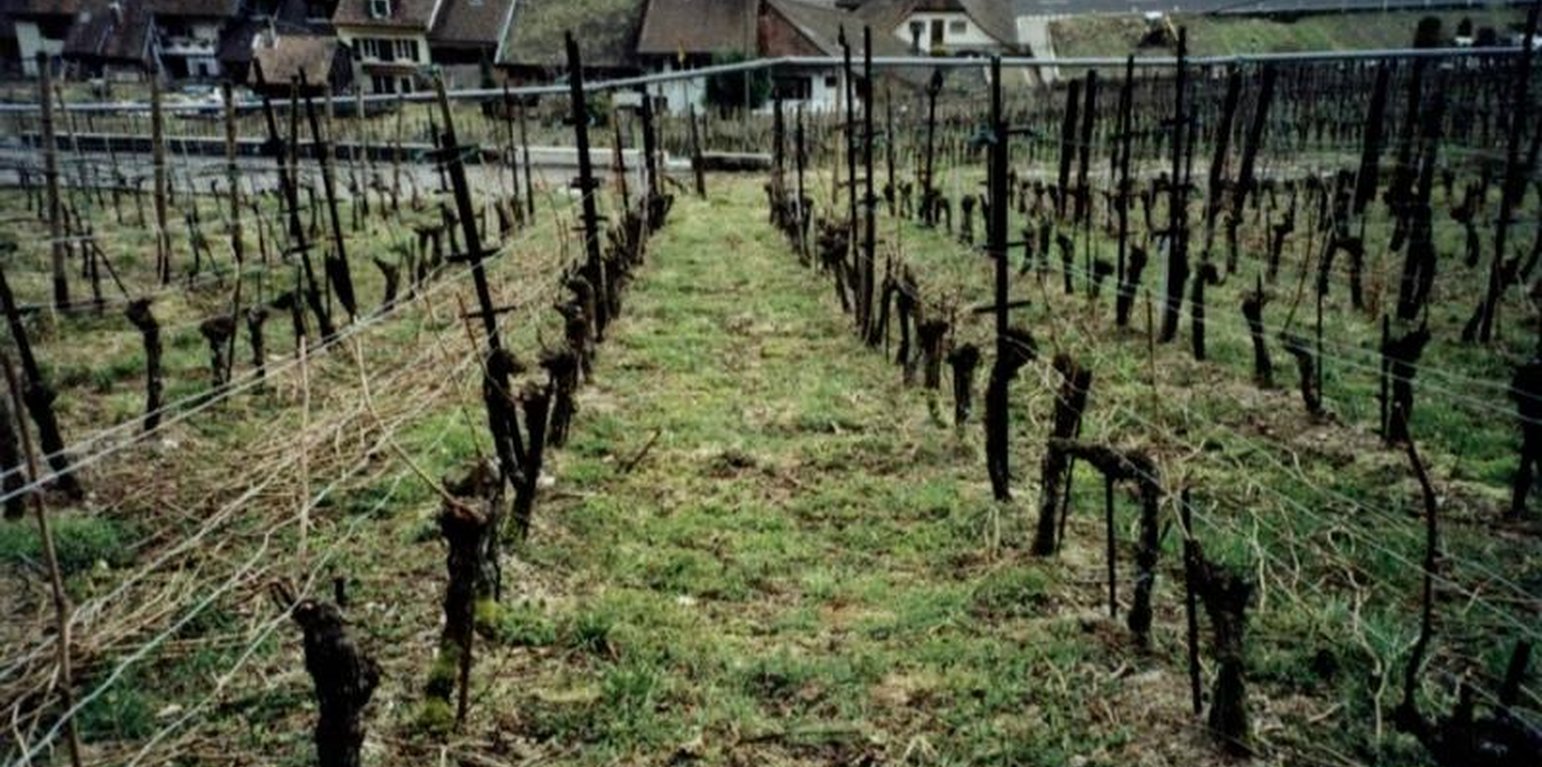



The area around Lake Biel has a strong wine growing tradition dating back several centuries. The vineyards are, for micro-climatic reasons, sited on the southwest facing slope close to the lake. Annual rainfall is about 1,000 mm, with at least one erosive storm per year, and the soils are highly erodible. In conventional viniculture all weeds are controlled chemically. The ‘green cover technology’ comprises sown, or naturally occurring, perennial grasses and herbs which form a biodiverse green cover - a ‘living mulch’ - over the soil surface between vine rows. In this region, rows are generally oriented up and down the slope for ease of machine operation. Green cover may also be applied where vines are grown on narrow bench terraces. The purpose is the prevention of soil degradation, especially soil erosion by water. Secondary purposes include protection of the soil surface from compaction when using mechanised equipment, and promotion of biodiversity.
Green cover is generally established naturally - except on contour-planted terraced vineyards, where cover is planted for immediate stabilisation of the terraces. To avoid competition, a 10-40 cm diameter zone around the freshly planted vines is kept free from vegetation: during the three year establishment period it is removed by hoe, later it is controlled with herbicides (either as a strip along vine rows or around individual vines). The topsoil between the vine rows is ripped every few years with an implement pulled by a small caterpillar tractor. The green cover vegetation is cut, chopped and left as mulch several times using special mulching machines. These operations are not carried out over the whole field at once: alternate rows are left untouched to ensure that some vegetation remains to maintain biodiversity. When these rows redevelop their green cover, the others are then treated. This is effectively a minimum tillage system, building up organic matter in the soil. Cutting and mulching, in addition to ripping, serves to circulate nutrients. Mineral fertilizer and herbicides are applied once a year around the vines. Experiments with the technology started in the 1970s, but green cover has now become standard practice.
Supportive measures include not removing crop residues (from vineyards) which are chopped later - simultaneously with the cover crop (grass) - to protect the soil surface, and irrigation in dry years.
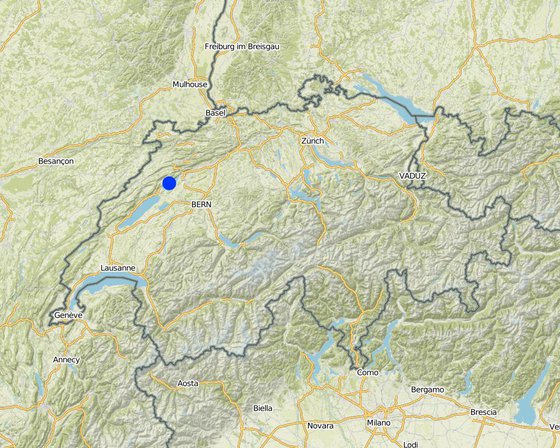
Lugar: Lake of Biel, Canton of Berne, Suiza
No. de sitios de Tecnología analizados:
Difusión de la Tecnología:
¿En un área de protección permanente?:
Fecha de la implementación: hace menos de 10 años (recientemente)
Tipo de introducción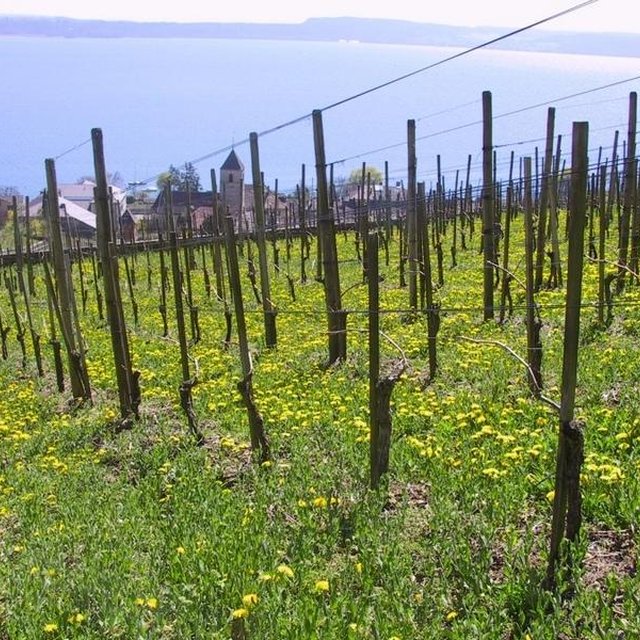
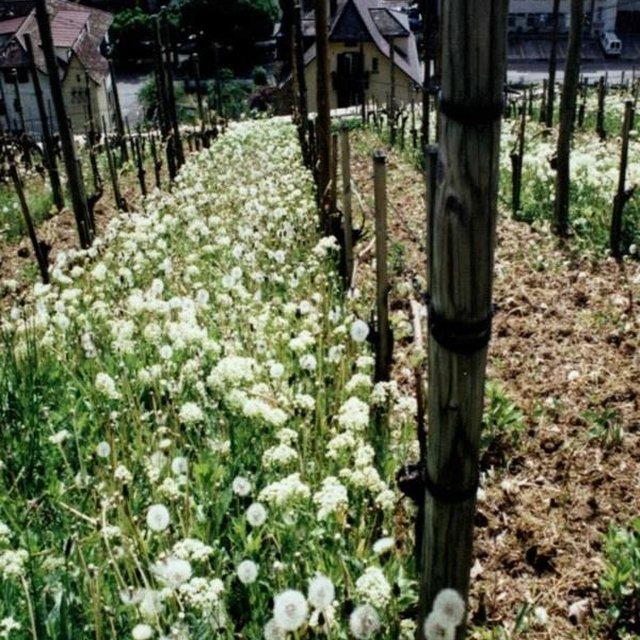






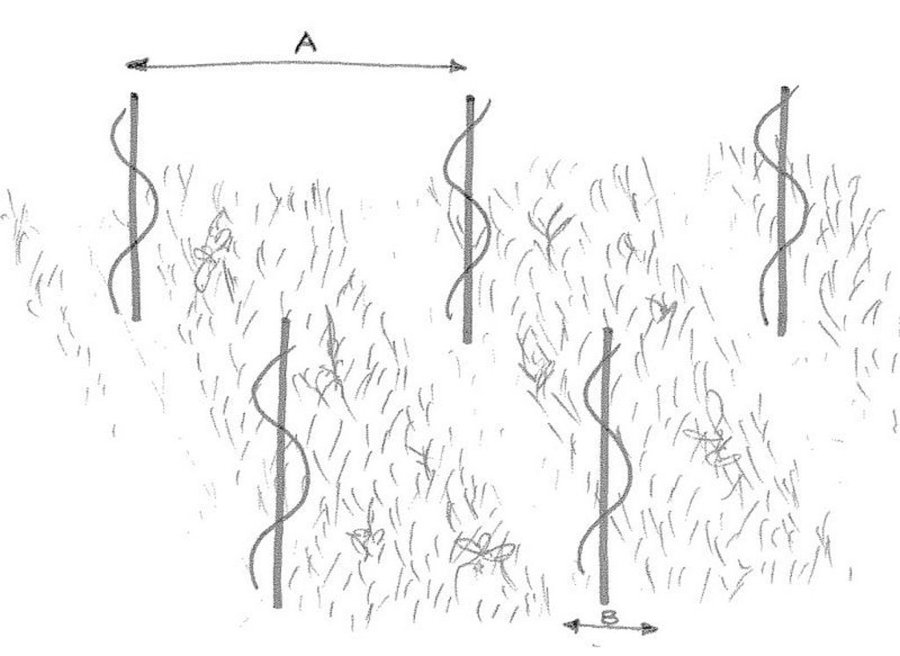
| Especifique insumo | Unidad | Cantidad | Costos por unidad (Swiss Franc) | Costos totales por insumo (Swiss Franc) | % de los costos cubiertos por los usuarios de las tierras |
| Mano de obra | |||||
| Labour | ha | 1,0 | 13800,0 | 13800,0 | 100,0 |
| Equipo | |||||
| Machine use | ha | 1,0 | 1000,0 | 1000,0 | 100,0 |
| Tools | ha | 1,0 | 100,0 | ||
| Material para plantas | |||||
| Seeds of natural vegetation | ha | 1,0 | 100,0 | ||
| Fertilizantes y biocidas | |||||
| Fertilizer | ha | 1,0 | 200,0 | 200,0 | 100,0 |
| Biocides | ha | 1,0 | 100,0 | ||
| Compost/manure | ha | 1,0 | 100,0 | ||
| Costos totales para establecer la Tecnología | 15'000.0 | ||||
| Costos totales para establecer la Tecnología en USD | 20'000.0 | ||||
| Especifique insumo | Unidad | Cantidad | Costos por unidad (Swiss Franc) | Costos totales por insumo (Swiss Franc) | % de los costos cubiertos por los usuarios de las tierras |
| Mano de obra | |||||
| Labour | ha | 1,0 | 1500,0 | 1500,0 | 100,0 |
| Equipo | |||||
| Machine use | ha | 1,0 | 650,0 | 650,0 | 100,0 |
| Tools | ha | 1,0 | 100,0 | ||
| Fertilizantes y biocidas | |||||
| Fertilizer | ha | 1,0 | 60,0 | 60,0 | 100,0 |
| Biocides | ha | 1,0 | 90,0 | 90,0 | 100,0 |
| Compost/manure | ha | 1,0 | 100,0 | ||
| Indique los costos totales para mantenecer la Tecnología | 2'300.0 | ||||
| Costos totales para mantener la Tecnología en USD | 3'066.67 | ||||
10–20% due to competition for water/nutrients
Quality of wine decreased when strong competition of water and nutrients happens and nothing is done against it.
Due to competition of water and nutrients and higher susceptibility to fungal decay (due to higher evapotranspiration rate with green cover and therefore humid microclimatic conditions). Little danger of frost only in depressions or plains (due to higher evapotranspiration rate)
(Indirectly due to less erosion damage in the long-term – also due to subsidies related to green cover,marketing under the label of ‘ecological agricultural production’, and other criteria)
More and specific knowledge necessary. Weeing, cutting, ripping
Special machines needed, mechanisation is almost a must to be economically successful in the long term
Healthier than without SWC, less application of biocides
Increased exchange of knowledge and contacts in winegrowers society
Research stations gained new knowledge and attention
Between generations or between farmers applying green cover and others. Reason: farmers are differently attached to traditional values and norms (i.e.: traditionally every plant 'out-of-place' was seen as unuseful weed and fought with a hoe)
Many farmers apply green cover see green cover as a personal satisfaction or challenge for an ecologically and economically sustainable viticulture
Landscape and appearance of vineyard as cultural heritage. Reason: different values an norms of "how a vineyard should look like". Traditionally vines were planted very dense with no vegetation cover in between.
Especially through improved water retention capacity (due to improved soil structure)
Especially mice
Through beneficial animals
And groundwater